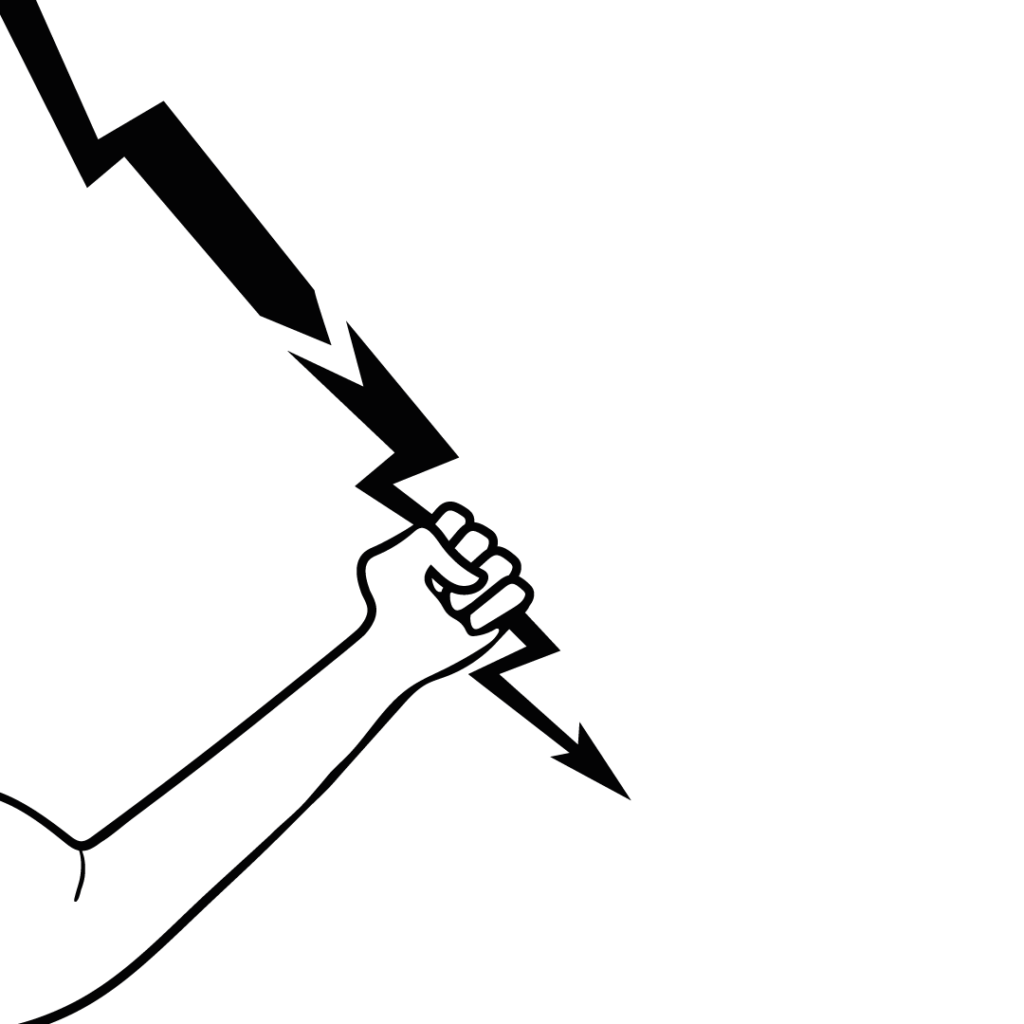GENDER INEQUALITY IN THE ENERGY SECTOR
Women, with a participation degree of 22.1% have mainly administrative, communicative positions and don’t have an impact in decision-making. Possible explanations for gender differences in the energy sector are: the lack of abilities as a result of gender differences in educational institutions (that are relevant to energy), the perception that the energy sector is not a field for women because of existing stereotypes, the few opportunities for career development and the lack of counseling programs for women.
Illustration: Argjira Kukaj

In the energy sector there are gender differences and inequalities. The European Institute for Gender Equality (EIGE) was founded to compile, analyze and distribute data on gender differences and inequality in Europe. From a research study of 2019 from this institute, the index on gender distinction in the EU has turned out to be 67.4. This research has also included the energy sector, particularly gender differences in trainings, education and the labor market in the energy sector.
The access to energy has continually seen a rise. According to indicators of the World Bank, the access to energy for the EU is 100% (World Bank, Sustainable Energy for All (SE4ALL)). In the technical aspect it can seem that all of EU’s residents have the same access in energy and that there’s full gender equality as far as access to energy goes. But, the energy system in its nature is sociotechnical. This means that not everyone has the same experience in this sector. Differences are visible when the comparison is made of the access to energy and the fact of how economically affordable the access to energy is. EIGE has data on single person households and according to the analysis, women make up a larger percentage of this category.
There’s evidence that there are gender differences in salaries. When the report is analyzed through a gender specter, between the price of electricity and the household income for a person, there’s visible differences women face in the economic unaffordability of access to energy (Clancy et al. 2017). Despite the fact that in the opportunity to choose women have a tendency to choose “greener” and stable options (EIGE), the problem lies on the fact of how economically affordable these preferences are. The way income and salary differences define women’s inclusion in the energetic transition is making efficient energetic investments and other choices that would directly impact the general lowering of energetic consumption impossible and consequently have more affordable bills.
Simultaneously this makes the woman’s position impossible in energetic transition. The energetic transition has created a trend in new job openings. But, even in the renewable energy sector there are gender differences in the number of people employed and in the job positions the employees have (Sustainlabour, 2013) and (EIGE, 2012). In the gender sector, men dominate with 77.9% of differing jobs.
Women, with a participation degree of 22.1% have mainly administrative, communicative positions and don’t have an impact in decision-making. Possible explanations for gender differences in the energy sector are: the lack of abilities as a result of gender differences in educational institutions (that are relevant to energy), the perception that the energy sector is not a field for women because of existing stereotypes, the few opportunities for career development and the lack of counseling programs for women.
Through an international study on women’s participation in decision-making processes in the relevant ministries for creating manuals and programs for energy, it’s been found that their participation in these positions is 6%. In March of 2019, only 4 states of BE have had women such as Ministries of Energy. The European project, “Climate for Change- Gender Equality and Climate Policy” was drafted to promote women’s participation in decision-making positions tied to climate change. According to this study, most of Europe’s countries have had a low participation of women in these positions with small differences in member states of EU.
The situation stands the same as in the public sector also in the private one. EIGE has analyzed 295 energy companies and has concluded that only 36% of these companies have women in their board of directors or managers. According to the same study only 17.3% of women in the public energy sector are employed in high positions with a decision-making impact.
This article, together with the mentioned research studies don’t have an aim to offer proof that women in decision-making positions represent society’s interests better than men. This article together with the mentioned research studies and the analyzed data through gender filters have an informative character on the momentary state of gender inequality in our societies with a special focus on the energy sector. I consider coming to such conclusions dangerous because with that approach the full responsibility falls on the individual, in this case the woman, who is in that position and removes responsibility from other gender groups.
By focusing only on the individuals’ achievements we risk taking attention away from the existing gender barriers within public or private institutions, and attention must not be taken away from these issues. At least not until a level of awareness and well-being is achieved so that every individual, regardless of gender, is aware that there are alternative and can do what they’re good at.
About the author: Ana Nimani, 21 years old, finished her studies at the University of Pristina.


